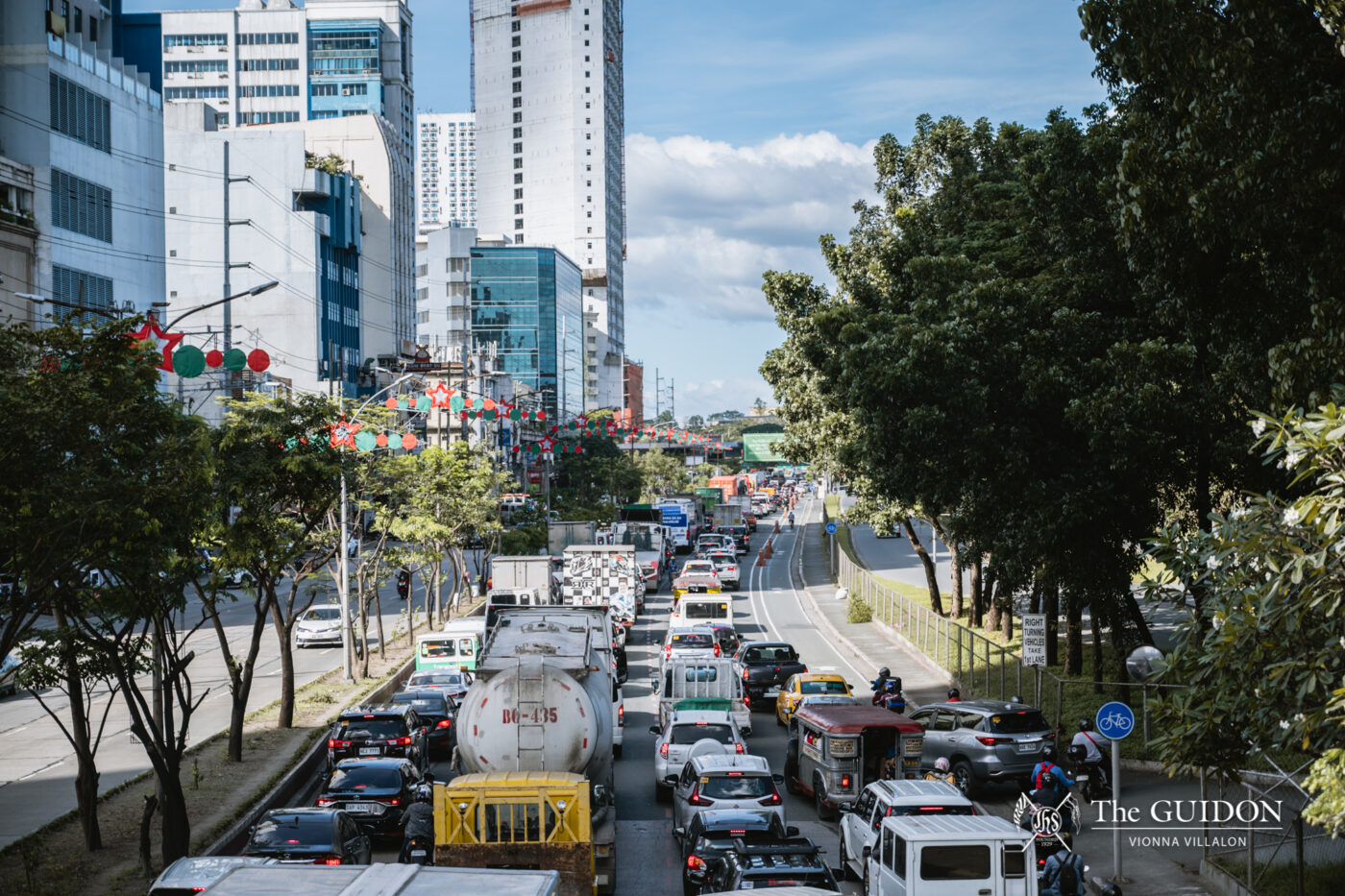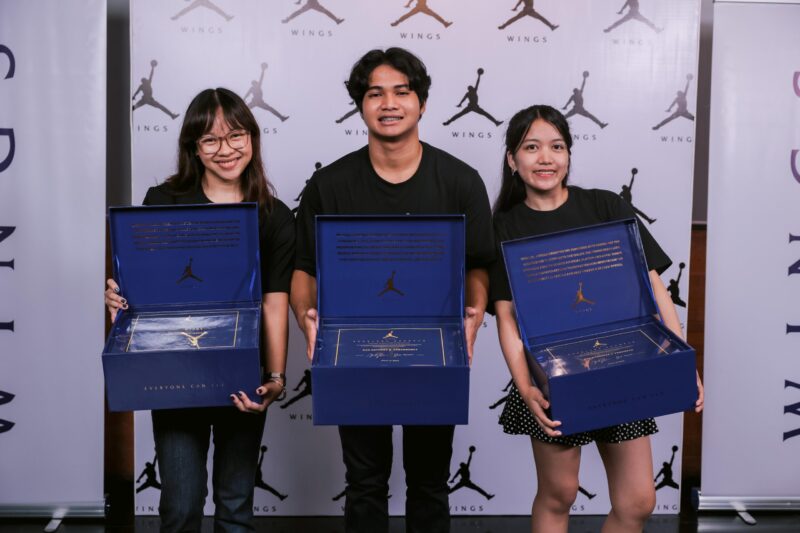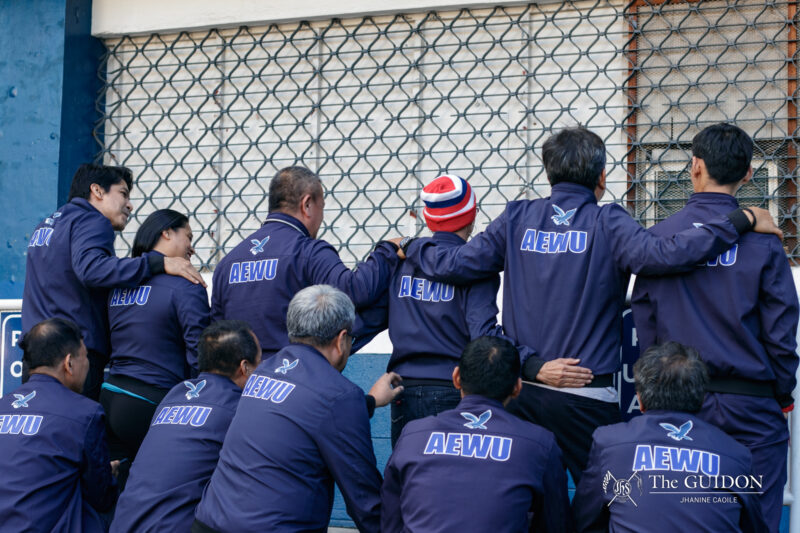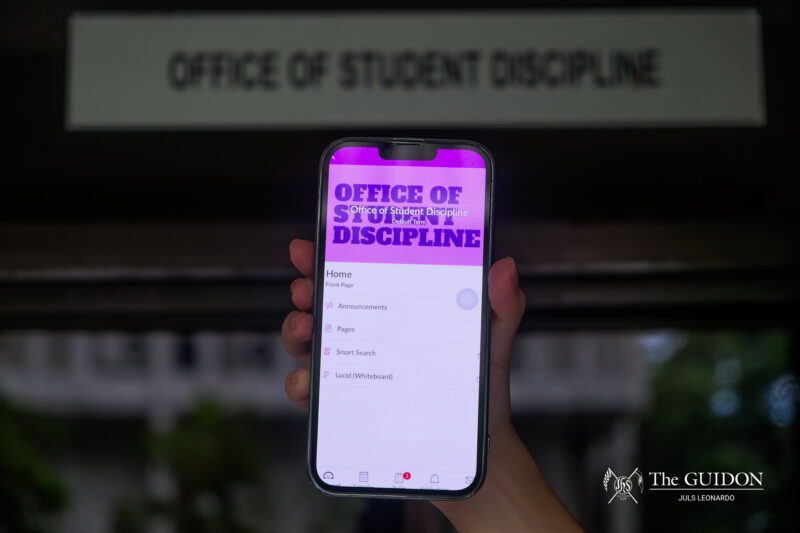DIFFICULTIES IN mobility have proliferated within the University campus and along Katipunan avenue following the return to fully onsite classes in the different Ateneo units—Grade School, Junior and Senior High School, and the Loyola Schools (LS).
In particular, LS students have increasingly complained about the large number of cars moving in and out of campus every day, bringing traffic to a crawl and endangering other road users along Katipunan.
Responding to such issues during a November meeting with the Sanggunian and the LS administration, transport advocate group Move as One Coalition raised the idea of shifting away from car-centric modes of transportation in Katipunan. Instead, they suggested that more people-centered alternatives like public transport and walking be promoted.
The group also proposed its project entitled Reimagining Katipunan, whose end goal imagines a road that trades off car-centric travel lane space for commuter-friendly additions, such as bike-friendly lanes and pedestrian islands in the Katipunan area.
Road complications
Given the dire traffic situation in Katipunan, Move As One Member Hya Bendaña lamented that not only do car owners get stuck in gridlock but pedestrians do, too, as cars block their path on sidewalks. Other road users such as cyclists are also endangered by the high volume of cars, which end up blocking the bike lanes along Katipunan.
These problems factored in the coalition’s decision to propose Reimagining Katipunan. The proposal further reasoned, “Members of our community are trying to change things [in] their own capacity, but what we need is a coordinated systemic response.”
Thus, despite Move As One’s initiatives and eagerness to ease traffic on the campus premises, the execution of these plans is ultimately up to the LS administration, said Bendaña.
“It’s the mandate of Sanggu and the mandate of the Ateneo admin. It’s their burden and [their] obligation for them to improve mobility in Katipunan. Move as One enters the picture to give advice and to give their suggestion[s], if they do ask,” she added.
When contacted regarding current plans regarding traffic and campus mobility, the administration denied requests for interviews with The GUIDON on the matter.
Student initiatives against traffic
To further help mobility around campus, the DSWS has since spearheaded the carpool initiative whereby LS students can carpool with fellow students to and from the Ateneo campus.
DSWS chairperson John Tuazon explained that upon joining the initiative, students who live in surrounding areas are grouped. From then on, they must coordinate with one another to discuss the route, the time of departure, and the time they will leave campus.
While such initiatives are causes for celebration, students are still restless to see more improvements regarding traffic. Student-driver Mikaella Per (1 AB Dip IR) said that when the drop-off points are closed, it causes significant congestion within the Ateneo, especially during the rush hours: 6 to 8 AM and 3 to 7 PM.
Raising similar traffic woes, student-commuter Riva Suzanne Comia (1 BS CTM) lamented that she tried to join DSWS’ carpool initiative but finds it hard to schedule and coordinate with other students regarding this program. Now, she takes the public bus going to and from school but still faces a different problem. She has to wait an entire hour in the bus queue due to the bus system’s inefficient scheduling.
To mitigate the traffic and ease the physical and mental strain it unleashes, the mentioned students asked that the University open more gates allowing vehicles to enter and exit campus more freely, thus decongesting campus. They also hope that the administration brainstorm other traffic-easing initiatives.
However, Bendaña mentioned that Sanggunian has yet to respond to Move As One regarding their official plans for the current traffic.
Due to the need for urgency, Bendaña said that Move As One has already suggested traffic solutions to the Sanggunian and the LS administration.
She stated that in terms of acting on the suggestions and actually implementing them, the changes’ effectiveness is largely dependent on the actions of the Ateneo administration and the projects they ultimately choose to implement.
Need for broader solutions
Considering the need for a joint response, Philosophy Department Professor and bike lane advocate Remmon Barbaza proposed to partner with nearby institutions, namely the University of the Philippines Diliman and Miriam College.
He added that traffic has only worsened ever since his undergraduate years in 2002—seeing the poor traffic condition not just in the Ateneo but the entire Katipunan area as well.
Barbaza also mentioned that Katipunan is not the only place mired in this issue, but the whole country is languishing from severe traffic congestion problems as well since the country is car-centric. “Nobody’s winning in this. […] If we make the city pedestrian and bike-friendly, everyone’s a winner,” Barbaza added.
Sharing the frustration of the traffic, Bendaña urges the Sanggunian and the LS administration to make fixing traffic their top priority. She says that the traffic does not only affect the students, but it affects the community as a whole.







